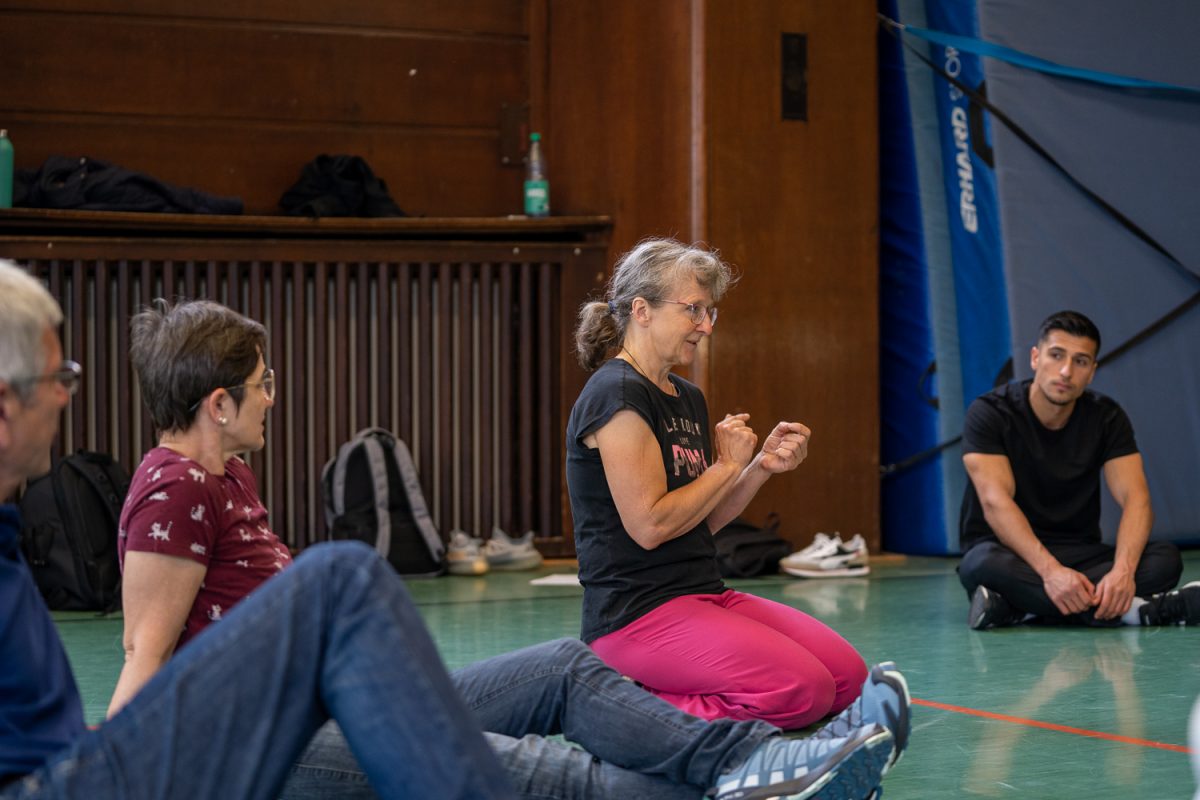Movement brings people together International course at the Institute of Sport Science and Physical Education
The Institute of Sport Science and Physical Education is trialling a new format of international cooperation: Together with the Universidad de Valladolid in Spain, the Université de Lyon in France and the Instituto Politecnico in Portugal, TU Braunschweig is researching the influences of the environment on the body and movement as part of a so-called Erasmus+ Blended Intensive Programme. The joint course organised by the three universities focuses on the topic of “Embodiement (and environment) – sensomotoric influences on learning processes in different settings”.
In this interview, project coordinator Dr Andrea Probst gives an insight into the organisation of the course.
Why did you decide to offer a blended intensive programme?
We have had European and non-European collaborations with universities in Portugal, Spain and Brazil at our institute for many years. These were initiated and maintained by Professor Reiner Hildebrandt-Stramann before he retired. As a lecturer, I took part in Erasmus+ lecturer mobilities for teaching purposes and later also contributed to our international collaborations in terms of content and organisation.
These projects were always very enriching both professionally and personally, which is why I really wanted to continue the work of Professor Hildebrandt-Stramann. Thankfully, I am actively supported by my colleagues Nicola Böhlke and Fabian Muhsal. What I like about the Erasmus+ Blended Intensive Programme is that hybrid forms are also required. International exchange is much easier and cheaper to organise digitally. However, face-to-face phases are also needed – especially because our students should not only learn the content, but also take away intercultural skills from the course. Communication is always something physical, especially when the common language is not the mother tongue.
What were the first steps in the project?
The project is being coordinated by us at TU Braunschweig. The course started in mid-December with a digital kick-off in which we worked in small groups to develop an initial approach to the project topic. We realised that “short” is interpreted differently in every country and that our introductory round was far too long. Despite these small organisational challenges, the start was made. The working groups that we formed at this meeting were given tasks to work on before the next meeting at the end of April. For example, the students have to look at the country-specific approach to the meaning of body and movement. Are there similarities? Are there differences? The results of the group work will be discussed in the next online meeting.

Dr Andrea Probst (centre) sees great value in holding international courses. Photo: Ahmed Nassef/TU Braunschweig
What value do you hope to gain from this international course?
I hope for an active exchange in the mixed-country working groups. The students should learn that you can find a way to communicate with each other even without speaking the same language perfectly. In addition, the different international perspectives are also very interesting for the topic of our course: we learn about different sociological and cultural influences on the design of movement environments, which depend on the respective countries. It is always important to think outside the box in order to learn from and with each other.
I hope that this will encourage our students to think internationally in the future. Most of them will work as teachers after graduation. If they bring international openness, understanding and acceptance with them into their future working environment at school, we will have done a lot of things right.
Does an international course also involve special challenges?
I see major challenges in developing a (shared) understanding, especially of specialised literature. This is not always easy even in your own language. Although English is the “common” language for the project, it is precisely because of this that comprehension problems often arise due to the different connotations. As a teacher, I have to schedule a lot more time not only to translate, but also to give the students time to develop a common understanding of the content.
What happens after the kick-off?
The next digital meeting will take place on 24 April. There will be keynote speeches and the international working groups will present their results. The presence week will then take place in June. We are expecting 20 lecturers and students from the other participating universities at TU Braunschweig. We are currently preparing a suitable programme for the week. I’m really looking forward to this on-campus phase, as an active, physical presence is fundamental to the field of sport and movement education. Incidentally, I also consider the examination of increasing digitalisation and its effects on the body and movement to be one of the core tasks of our subject. After all, despite all the positive opportunities that this opens up for our living and working environment, we must not lose our real, genuine connection to ourselves and our bodies.
After the week on campus, the course enters its final phase. The students’ self-reflection questionnaires are then analysed. The results of these evaluations will be presented at the end in a follow-up event in July. This will conclude the course. We are already working together with our partner universities on a follow-up, which would then also include a short stay abroad for our students.
Are there any further ideas for international collaborations or projects after completing the course?
We will definitely be launching further international projects. In April, I will be flying to the Universidad de la Frontera in Chile with colleagues from the Institute of Sport Science and Physical Education as part of the DAAD project “Go out, Come in – Institutionalising exchange structures for teacher training at TU Braunschweig” to present our projects at the sports institute there and talk about possible collaborations. We also hope that we will be able to finalise a new partnership with a French university by 2025 at the latest, which will open up new exchange opportunities for our students.
